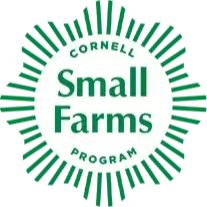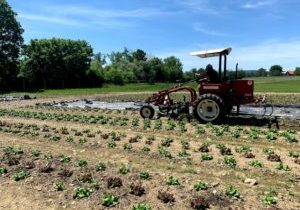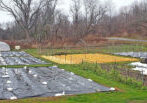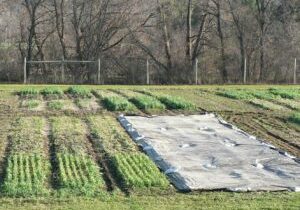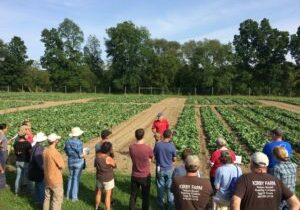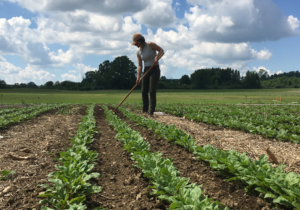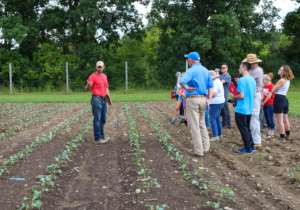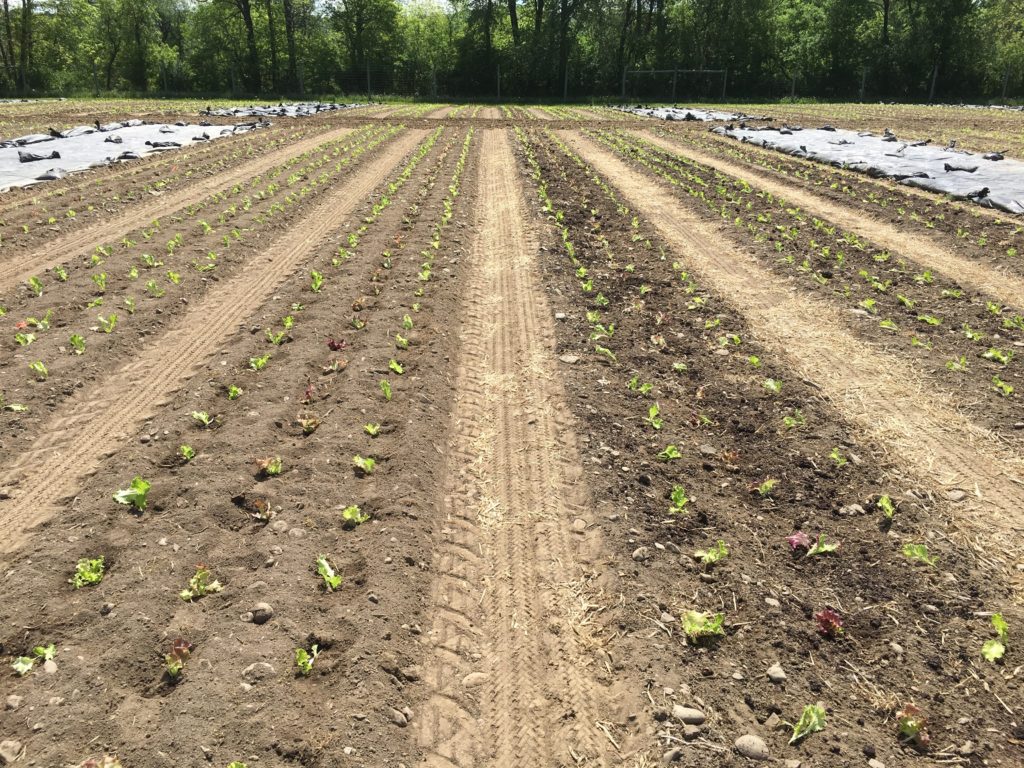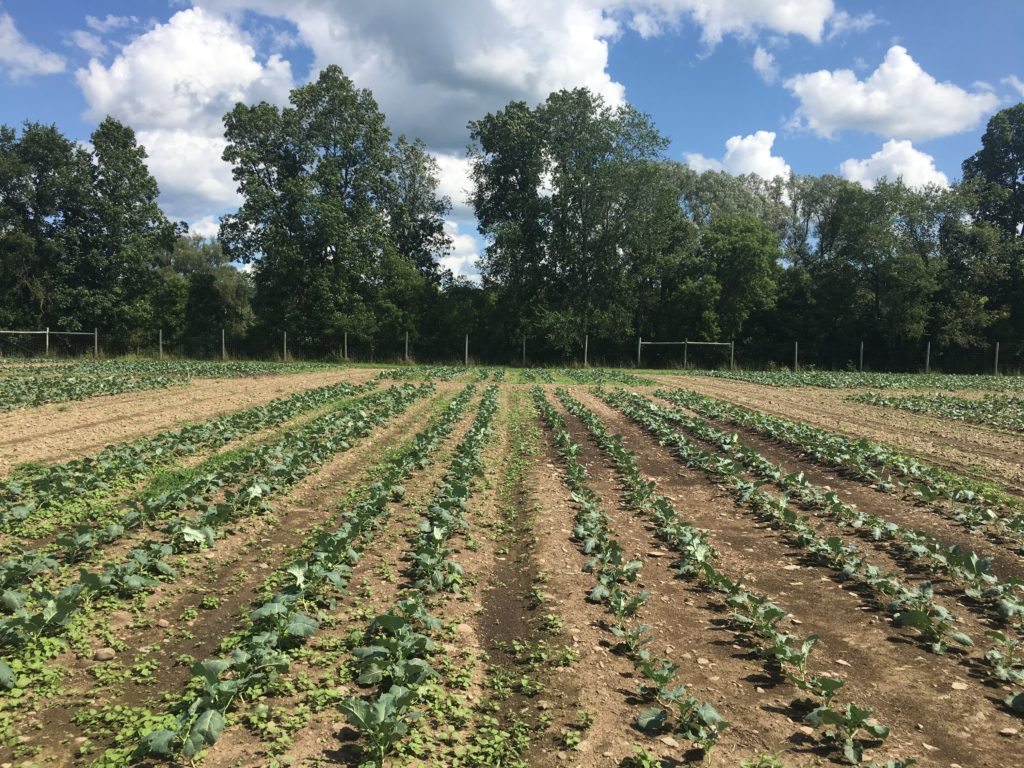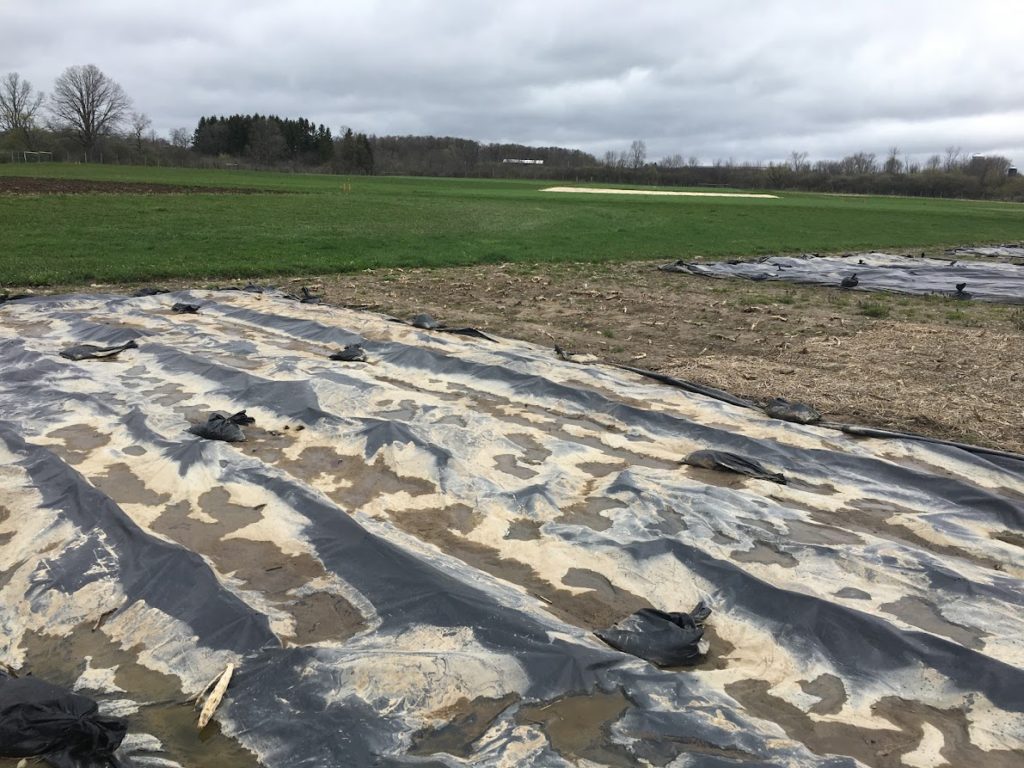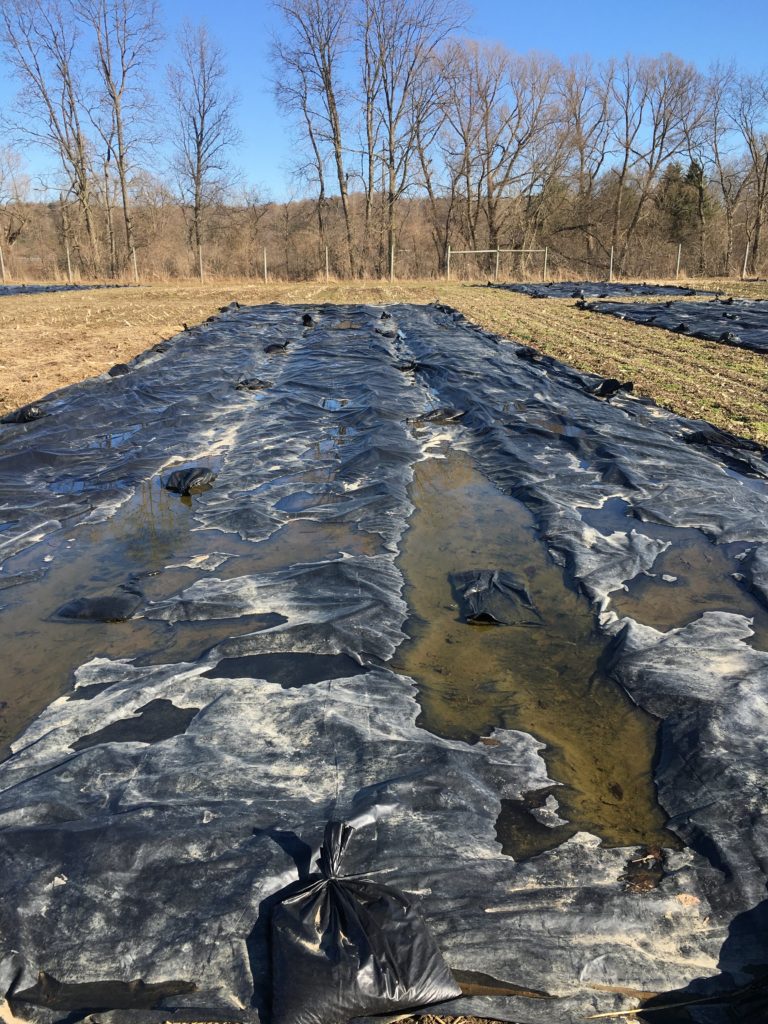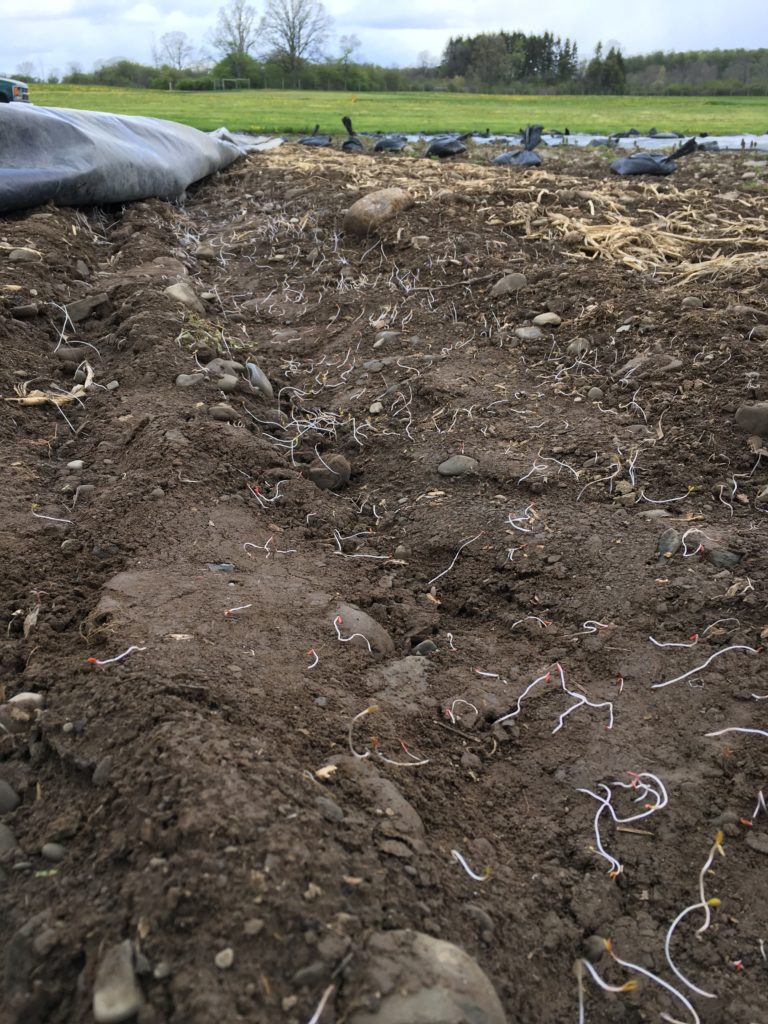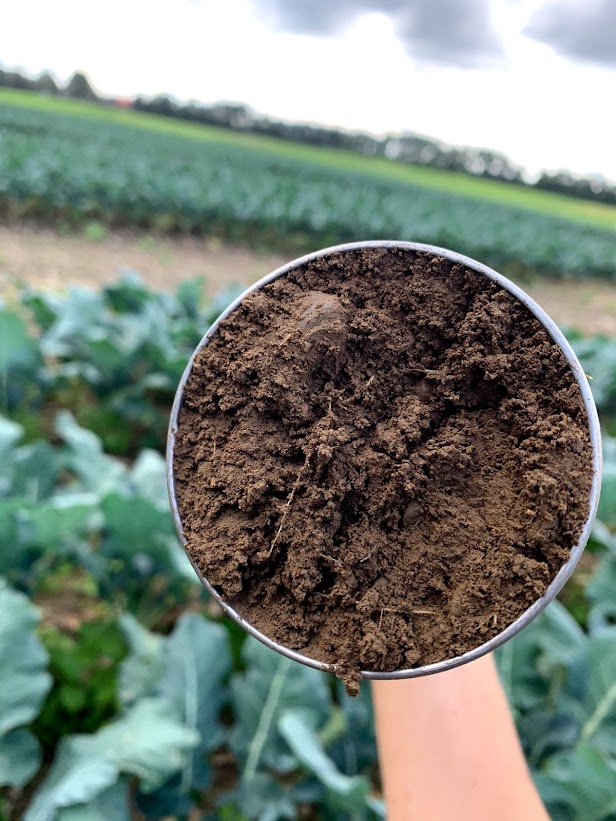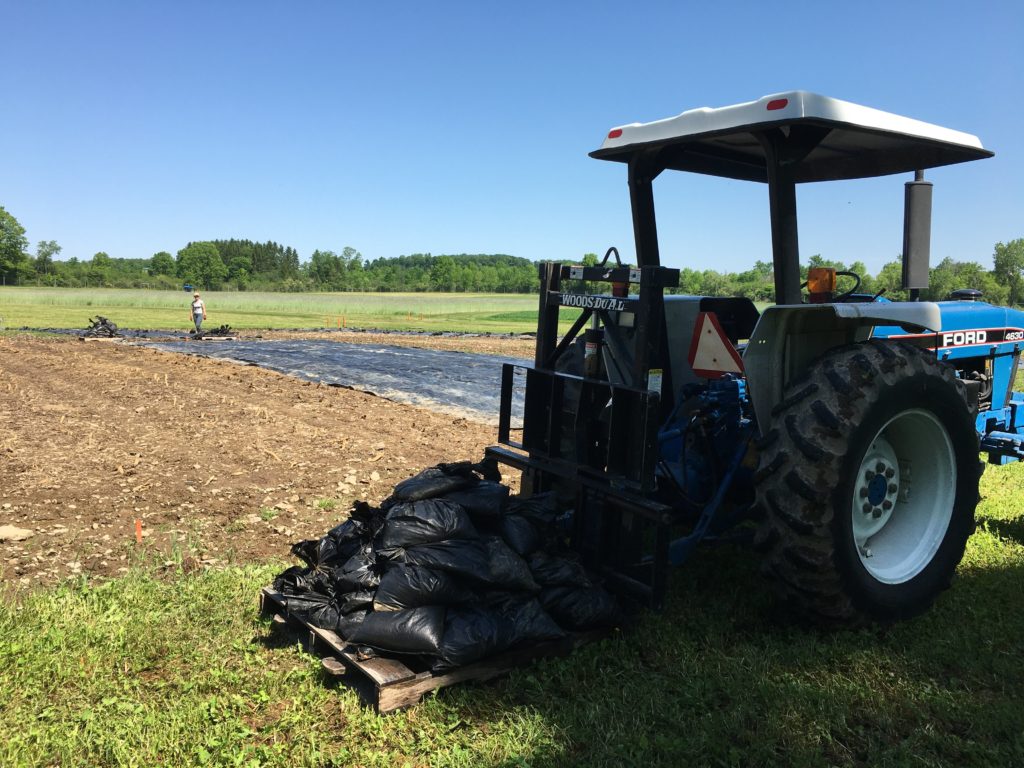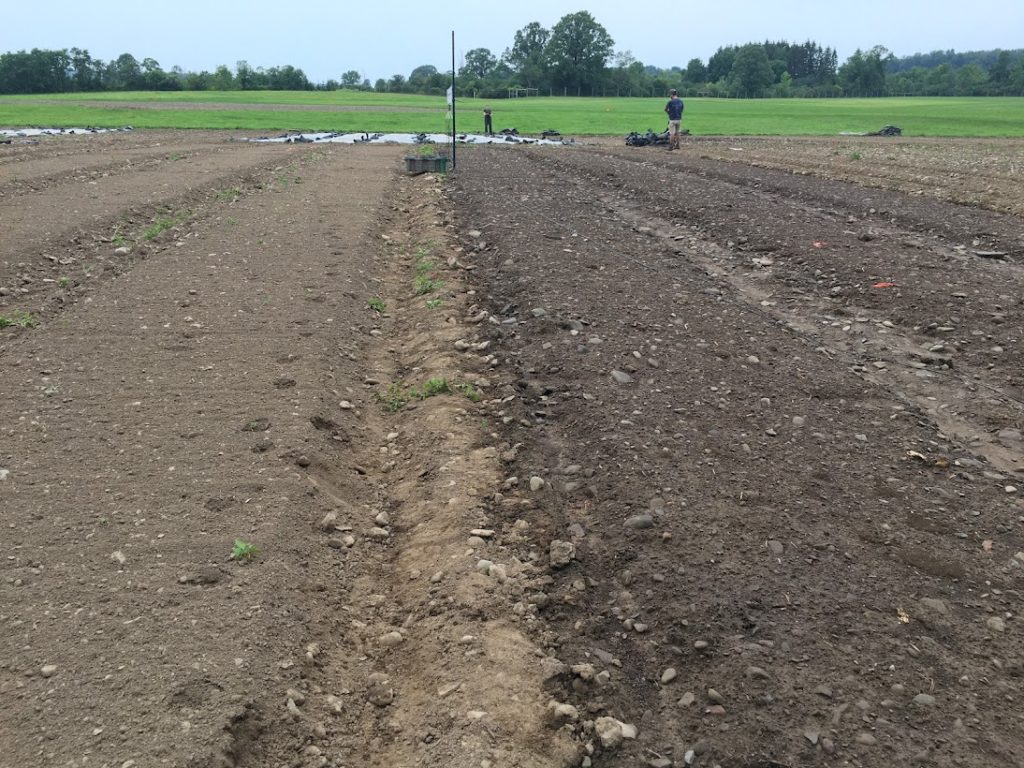Home » Projects » Reduced Tillage in Vegetables » Tarping
Tarps have become a multifunctional tool for small-scale and organic vegetable farms. Tarping, or occultation, involves the use of durable black plastic, often sourced as silage covers, that is applied to the soil surface between crops and removed before planting. Tarps are reusable over multiple years and adaptable to different applications and planting times over the season. They function as a soil health and weed management tool and serve as a valuable "placeholder" on the farm to hold beds weed-free between plantings. Tarps are working to do many different things - create a stale seed bed for the following crop, kill crops and weeds after harvest, terminate cover crops, and control soil moisture to improve field access in spring. Many of the challenges associated with tarping are logistical, including applying and securing them, moving them across fields, water ponding, and finding time in the rotation to fit them, especially in the middle of the season.
Go To: Tarping Guide > Articles > News and Updates > Webinars > Photo Gallery
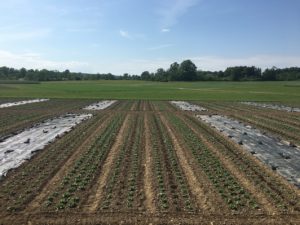
Tarping in the Northeast: A Guide for Small Farms
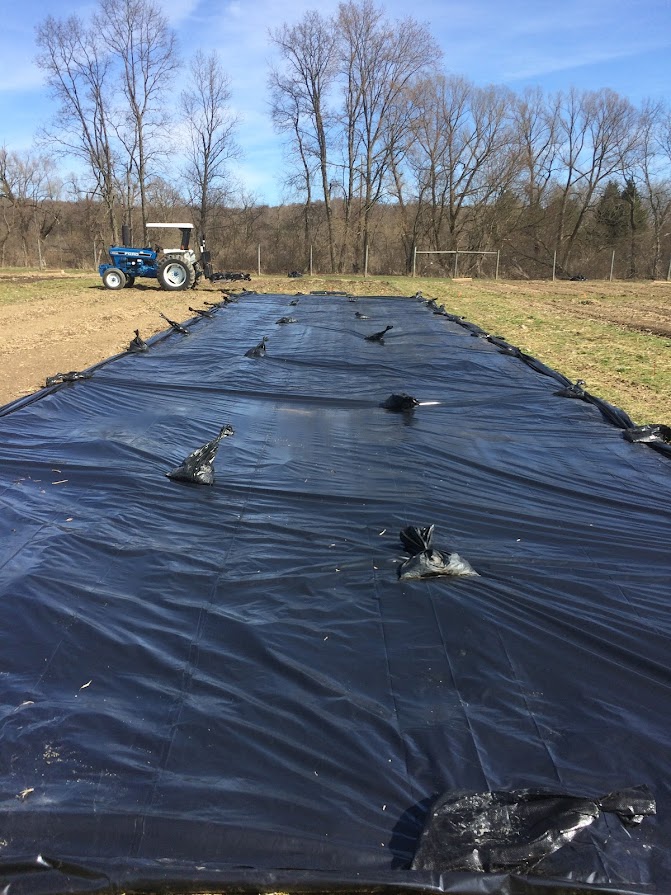
This is a practical guide to understanding how tarps work and how they can be applied in different applications on the farm. It summarizes results from research trials and highlights farmer experiences across multiple states in the Northeast region. It combines the details of tarp logistics and management alongside the science of the practice to support farmers interested in learning more about tarping and how to implement it to improve soil and weed management on their farm.
This guide is a product of the Northeast IPM Working Group on Tarping and Solarization, a project led by the University of Maine that brought together institutions, educators, and farmers across the Northeast region. Ryan Maher, RT Project manager, was a coauthor on this publication.
Tarping Articles
Reduced Tillage Project Uncovers Tarping Impacts for Organic Vegetable Farmers
We started a long-term research trial in 2014 to answer questions about tarping and support farmers in transitioning to using less tillage in organic vegetables. We’ve been comparing conventional tillage practices side by side with reduced and no practices and asking tarps to substitute for tillage and measuring the results over time.
Read more about our trial and some of our lessons learned through a reflection on our project page.
Local Farms Trial Tarping for Reduced Tillage Research
Tarping practices need to be fit to the farm. In addition to our research trials, we have partnered with farmers in our region to learn how to use them and find out where they are working and what challenges are emerging. We’ve heard about the learning curve to timing tarp applications and the successes with managing problem weeds. There’s always some unexpected results too, like how tarps impact soil moisture and improve conditions for working soils and planting.
Learn more about how local farmers are using tarps on their farms on our Project Page.
Reusable Black Tarps Suppress Weeds and Make Organic Reduced Tillage More Viable
How long do we keep tarps down to get the best results? In short, it depends on the goal. Our research applied tarps over different time frames, from 3 weeks to overwinter, to document the effects on cover crop residue decomposition, weed control, and the soil environment. This left us with patchwork of a field where we tried planting a crop with minimal or no-tillage to see how tarps measured up to conventional tillage practices.
Learn more about this research project in the Small Farms Quarterly.
Tarps can be used to manage the many curveballs nature throws at farmers. In this sports-laden reflection on our first years experimenting with tarps, learn about the first steps and obstacles to adopting this practice. We go over seedbed preparation, weed management, labor needs, tarp size, soil impacts, and crop residue.
Read more about our early lessons learned from article in Small Farms Quarterly.
News and Updates
Tarping Webinars
Reserving Beds With Tarps: Setting The Table For When It’s Time To Plant (March 2021)
It feels good to know beds are reserved and ready to go, but the logistics can be ugly – moving, securing, and shedding water. How can tarps be used to hold beds in a busy rotation with less weeds and less mess? One way is to use tarps for succession plantings, where tarps are laid and peeled back over time. Rachel Cross (Spirit of Walloon Market Garden – Boyne City, MI) shared their system for salad green successions and how they are managing the timing throughout the season. Another approach is to go small, use a tarp size that is easier to manage and try materials that hold less water. Molly Comstock (Colfax Farm – Alford, MA) shared how they are using woven fabric to hold beds between crops, killing crops and suppressing weeds, and moving towards no-till. Both brought their observations about problem weeds and we touched on combining tarps with other strategies, like flame weeding, when they come up short. This was part of our farmer-to-farmer "Tarp Talk" webinar series.
Watch the recording here.
Pairing Tarping With Cover Crops: Getting Both On The Menu (March 2021)
Tarps can taste better when they are mixed with other soil building practices. Cover crops help keep soil covered, maintain active roots, feed soil biology, and add organic matter through living plants. How can we use tarps to reduce tillage while adding cover crops? Tarps are being used to kill winter hardy cover crops, like rye and vetch, and when it is too late to get those cover crops in the ground, tarps are covering bare soil overwinter in preparation for early spring. Hear from Ben Stein (Edible Uprising Farm – Troy, NY) and Janna Siller (Adamah – Falls Village, CT) on their cash crop and cover crop planning, what fall management looks like, and how they are setting up for no-till planting when tarps come off. We also discussed pathway management and how tarps are fitting in with different mulches, from the living to the leaves. This webinar was part of our farmer-to-farmer 'Tarp Talk'" webinar series.
Watch the recording here.
You Can’t Send Back Your Soils And Weeds: Tarping The Problems You’re Served (April 2021)
It’s difficult to have cold, wet soils when you’re hungry to plant. Laying down tarps in fall and holding overwinter can help get beds planted earlier in spring. How can tarping help shift the timing of your plantings and start to draw down weeds? Maryellen Sheehan and Matthew Robinson (Hartwood Farm – Chittenango, NY) shared how tarps have turned into “raincoats” for their silty soil and how they are prioritizing crops for tarping on their 5 acres of vegetables. David McDaniel (Earth Dharma Farm – Jackson, ME) discussed how fall bed preparation and overwinter tarping sets up their spinach successions for the following year, which weeds have faded away and which ones persist. It’s not easy to secure tarps when they’re applied for months at a time; we also talked about lessons learned in keeping tarps down and the logistics of management on larger fields. This was part of our farmer-to-farmer "Tarp Talk" webinar series.
Watch the recording here.

